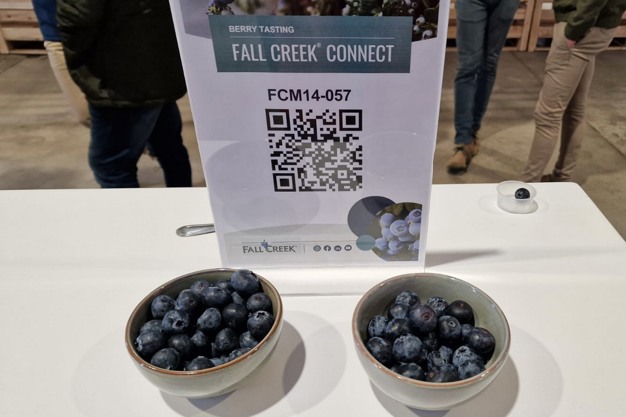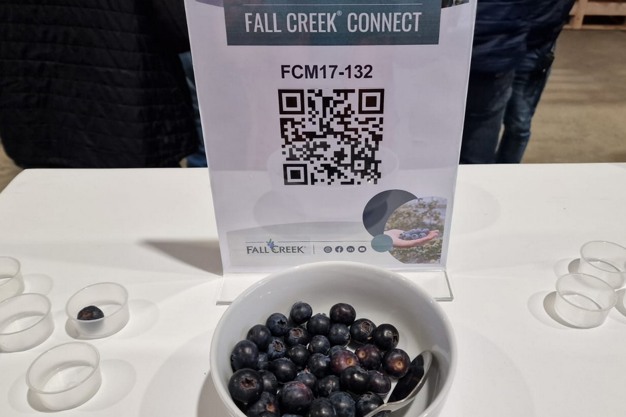Peru's blueberry industry is set to surpass last year's volumes, but this time with a steadier production curve compared to the sharp peaks of previous seasons. This could help maintain stable blueberry prices across most world markets. Chiara Maccera Núñez, Fall Creek's Applied Research Lead for Peru, explains: "The projection is for a higher volume compared to last year, but we expect a flatter curve. We won't see the peak we had before."

Chiara Maccera Núñez, Fall Creek's Applied Research Lead for Peru, in South Africa.
Núñez provided a brief overview of Peru's current season while speaking at Fall Creek Connect South Africa in Paarl. "Last year, we experienced the El Niño phenomenon in Peru, which reduced our volumes but resulted in higher prices. Still, it remains a very profitable crop. For the 2024-2025 season, the production curve will be more concentrated, with delays. We expect the peak by the end of September or early October," she added.
Núñez highlighted that during last season's lower export levels, prices surged due to the shortage. "In 2022, we saw a very high peak in September— volumes were high, and prices dropped. Peru is now aiming for a less concentrated peak, and some growers plan to harvest year-round. However, it is more challenging for us to harvest during the summer months, from January to March, so we expect lower volumes in the first half of the year. Blueberry prices have reached $7 per kilogram as demand rises, following a 23% decline in Peru's production last season."

Growers adapt to changing conditions
Núñez explained that Peruvian growers are increasingly replacing older varieties with new genetics to address climate challenges and evolving consumer preferences. "Growers are turning to new varieties to replace the old Biloxi and Ventura types. The newest crop establishments in Peru are now being grown in pots and substrates," she said.
This shift is particularly important for markets like China, where demand is growing thanks to these new blueberry varieties. "The market in China is expanding due to the quality and characteristics of these new varieties, which are better suited to meet both climate and market demands," Núñez added.

Trials across the globe
Though Núñez's primary role is as Applied Research Lead for Peru, she also oversees trials of new Fall Creek varieties globally. "We have row trials in over 13 countries and 80 trial sites. We collaborate throughout the season with growers globally," she noted.
Núñez highlighted some of the new varieties under trial, including the FCM14-057 and FCM17-132. "The FCM14-057 is an early-season variety, producing large to jumbo-sized fruit that is crunchy with excellent shelf life. FCM17-132 is another promising variety, thriving in the intermediate season," she explained.
However, she cautioned that while these varieties are showing promise, there is still work to be done to ensure they adapt to different growing media and conditions across all regions. "We have advanced selections, but we still need to verify their adaptability to various substrates and ensure they perform well in different countries," Núñez concluded.
For more information:
Elsa Fourie
Fall Creek South Africa
Tel: +27 72 503 7627
[email protected]
www.fallcreeknursery.com
